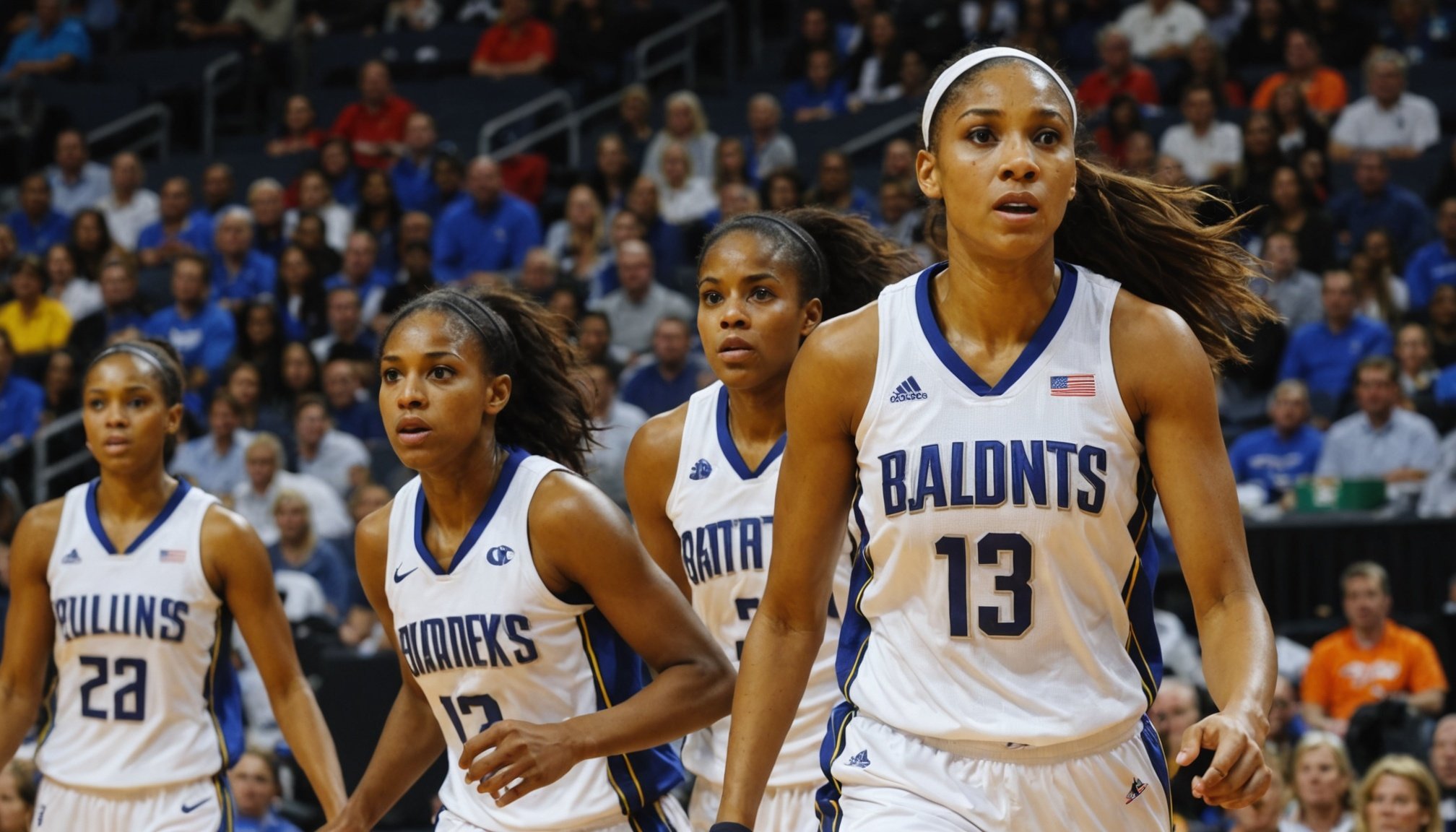In the dynamic realm of professional sports, female basketball players have made noteworthy strides. The allure of the court, the thrill of the game, and the passionate display of skill are as much a part of women’s basketball as they are in the broader sports landscape. Yet, despite their progress, these athletes encounter a unique set of challenges. From gender disparities to media representation, these obstacles shape their experiences in both the WNBA and other professional leagues. As we journey through the myriad challenges faced by women in the world of sports, we gain a deeper understanding of their resilience and relentless pursuit of excellence.
Gender Disparities in Professional Basketball
A Historical Overview
Historically, professional basketball has been dominated by men, leaving female athletes fighting for a place in the spotlight. The inception of the WNBA in 1996 marked a crucial moment for women in sports, offering a platform for skilled players to showcase their talents on a national stage. However, the league still faces challenges in achieving parity with its male counterparts, particularly the NBA.
Additional reading : Top Strategies for Fostering Team Chemistry in UK Basketball Teams
The Wage Gap
One of the most glaring disparities lies in salaries. While WNBA players are among the best in the game, they earn merely a fraction of what their male counterparts do. The average WNBA salary is significantly less than that in the NBA, prompting ongoing discussions about fair compensation. Female athletes often supplement their income by playing overseas during the offseason, a testament to the financial challenges they face.
Visibility and Media Representation
Media coverage of women’s sports, including basketball, remains disproportionate. Despite electrifying performances and championship games, female athletes receive minimal coverage compared to the men. This lack of visibility not only affects their public image but also limits endorsement opportunities, further widening the financial gap.
This might interest you : What are the career paths available for retired basketball players?
Institutional Support and Opportunities
Institutionally, there exist fewer opportunities for women to advance within teams and leagues. While strides have been made with increasing numbers of female coaches and executives, structural barriers persist. Ensuring female athletes have equal access to resources and opportunities is essential for leveling the playing field.
College to Professional Transition
The College Experience
College basketball serves as a breeding ground for many professional athletes, offering a glimpse of the challenges and opportunities that lie ahead. For female players, college is both a proving ground and a stepping stone. The intensity, competition, and exposure prepare them for the WNBA or international leagues. However, the transition is fraught with challenges that are often overlooked.
Limited Professional Opportunities
Upon graduation, female athletes face limited opportunities in professional sports. While the WNBA has grown over the years, it still comprises merely 12 teams. This scarcity leads to fierce competition among players vying for spots, leaving many talented athletes without a professional platform. In contrast, male players have a broader array of leagues and opportunities domestically and internationally.
Balancing Athletic and Academic Life
In college, athletes are tasked with balancing rigorous academic schedules alongside demanding sports commitments. This dual responsibility often leads to burnout, especially when navigating the path towards professional sports. For female athletes, the pressure to excel academically while pursuing an athletic career is heightened by societal expectations.
Navigating Media Expectations
As rising stars, female athletes also grapple with media expectations. Unlike their male counterparts, who often enjoy media training and exposure, female players are thrust into the limelight with little preparation. Understanding how to handle media scrutiny becomes an essential skill as they transition from college to professional arenas.
Perceptions and Stereotypes
Overcoming Stereotypes
Female athletes often combat pervasive stereotypes that question their abilities and dedication. The notion that men’s sports are inherently more competitive or exciting contributes to the undervaluation of women’s games. Challenging these perceptions requires consistent education and advocacy, both on and off the court.
The Role of Social Media
In recent years, social media has emerged as a powerful tool for female athletes to counter stereotypes and amplify their voices. Platforms like Instagram and Twitter allow players to share their stories, connect with fans, and advocate for gender equality in sports. However, navigating social media also comes with its own set of challenges, including facing online harassment and managing public perception.
The Influence of Role Models
Role models play a pivotal role in shaping perceptions. Iconic players like Sue Bird and Breanna Stewart have paved the way for younger athletes, demonstrating that success is achievable despite gender biases. The visibility of strong, successful women on the court inspires future generations and shifts public perception, helping to dismantle outdated stereotypes.
Educational Initiatives
Educational initiatives are crucial in fostering a better understanding of gender dynamics in sports. From grassroots programs to collegiate courses, these endeavors aim to educate both men and women about the value of female athletes and the importance of gender parity in sports. By changing mindsets, these programs help create a more inclusive environment for all athletes.
The Future of Women’s Professional Basketball
Growth and Expansion
The future of women’s professional basketball is one of potential and promise. Despite challenges, the WNBA and other leagues are expanding, with increased viewership and fan engagement. This growth signals a shift in public interest and support for women’s sports, paving the way for new opportunities.
Embracing Technology and Innovation
Technology and innovation play a critical role in the evolution of women’s basketball. From advanced analytics to virtual reality training, these tools enhance player performance and team strategies. Embracing such innovations ensures that female athletes can compete on a level playing field with their male counterparts.
Advocacy and Policy Change
Policy changes at both institutional and governmental levels are essential for achieving gender equality in sports. Advocating for fair pay, equal opportunities, and comprehensive support systems will be pivotal in addressing the challenges faced by female athletes. Collaboration among stakeholders, including athletes, organizations, and policymakers, is necessary to drive meaningful change.
Investing in Youth Development
Investing in youth development programs is critical for sustaining the future of women’s basketball. By nurturing young talent, providing access to quality training, and promoting inclusive environments, we can ensure that the next generation of female athletes has the foundation to thrive in professional sports.
Conclusion
As we reflect on the journey of female basketball players in professional sports, it is clear that while challenges abound, so does potential. The resilience and determination of these athletes inspire not only fellow players but also the broader community. By acknowledging and addressing the obstacles they face, we pave the way for a brighter, more equitable future in sports. Together, we can champion a world where talent and dedication, not gender, define a player’s worth on the court.











